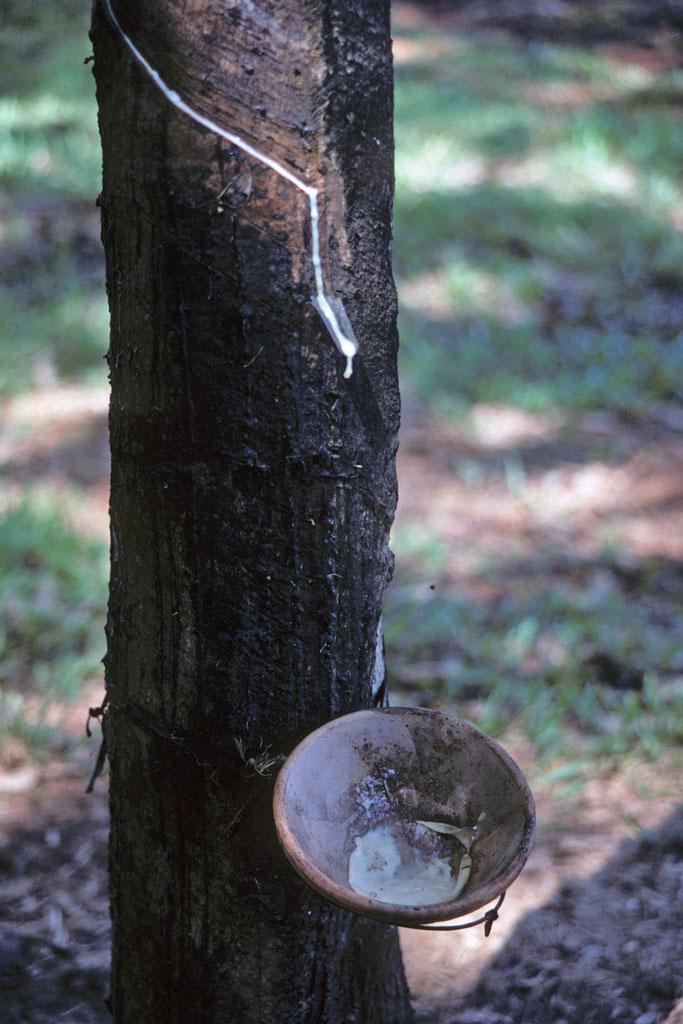White latex sap dripping into collection pan on tapped rubber tree in plantation
Rubber is an elastic latex from the Hevea braziliensis tree that is coagulated, or turned from liquid to semi-solid form. Waterproof and elastic, rubber is used for sports balls, vehicle tires, and many other practical items manufactured around the world. Rubber trees originally were a New World plant originating in Central or South American forests. Like corn (maize), cassava, and spicy capisicum peppers, rubber plants were moved by European colony rulers to Southeast Asia. Now 90 percent of the world's rubber is produced in Southeast Asia. Small incisions are cut into the trees' bark at night so that latex sap will drip longer before drying out in the tropical sun. Workers collect the tapped latex the following morning. Progressively lower cuts are made in the rubber trees, allowing them to be tapped for many years. After sufficient amounts are collected, basins of latex are processed with an acid to coagulate it, making the latex more solid. The acid is then removed by rolling the latex under pressure into thin sheets, which are smoked over a fire to stabilize the rubber. In that form the rubber can be exported. The tree shown here is on a plantation between Dalat and Ho Chi Minh City.

Creative Commons BY-NC-SA
This item has a Creative Commons license for re-use. This Creative Commons BY-NC-SA license means that you may use, remix, tweak, and build upon the work for non-commerical purposes as long as you credit the original creator and as long as you license your new creation using the same license. For more information about Creative Commons licensing and a link to the license, see full details at https://creativecommons.org/licenses/by-nc-sa/4.0/.